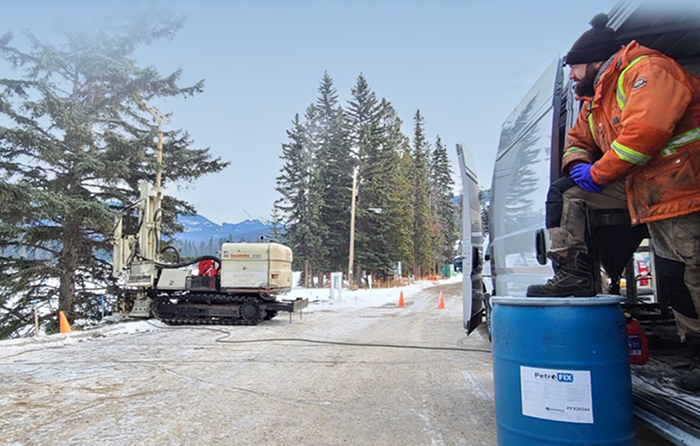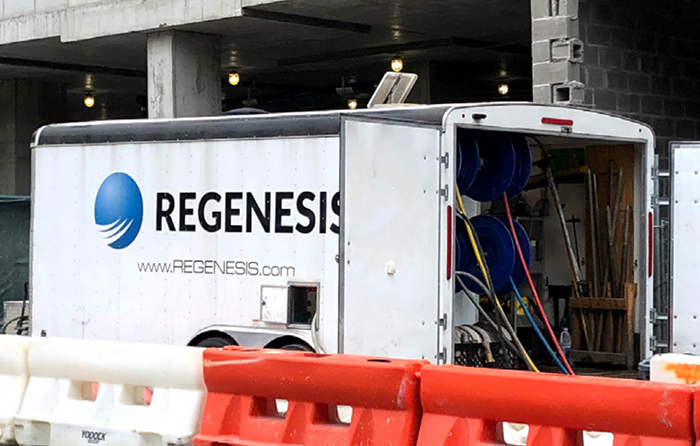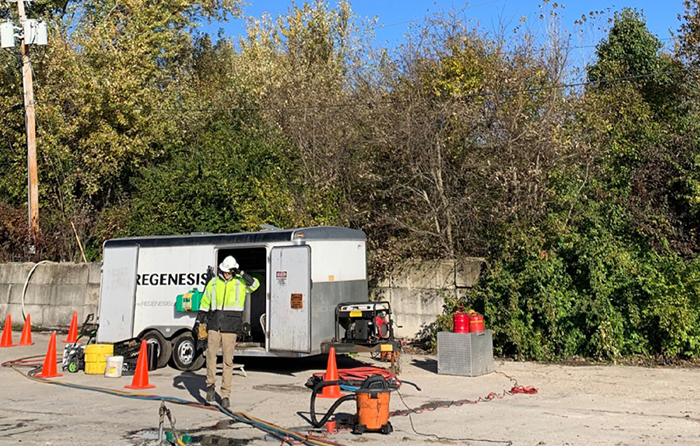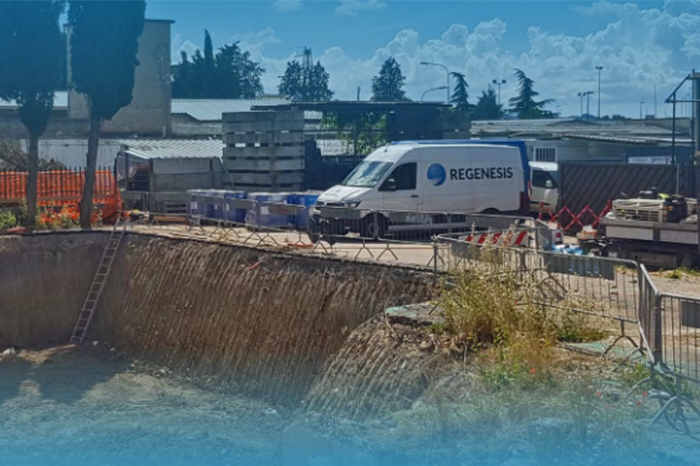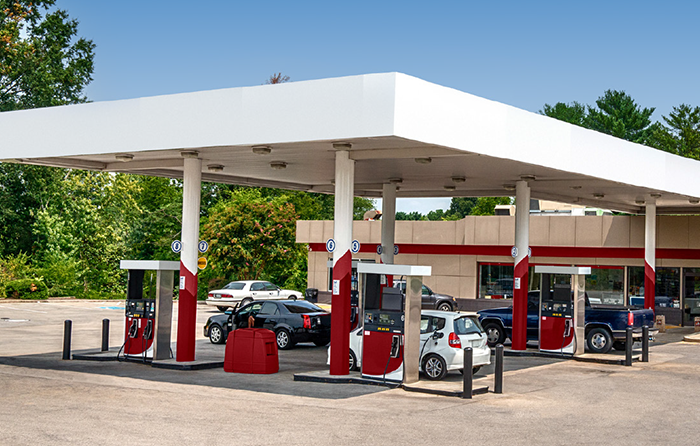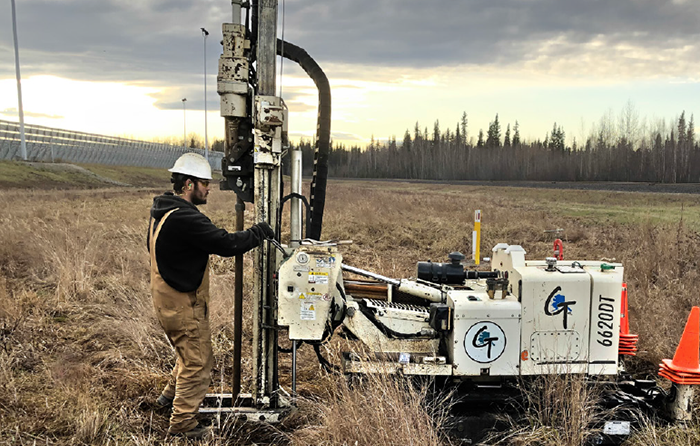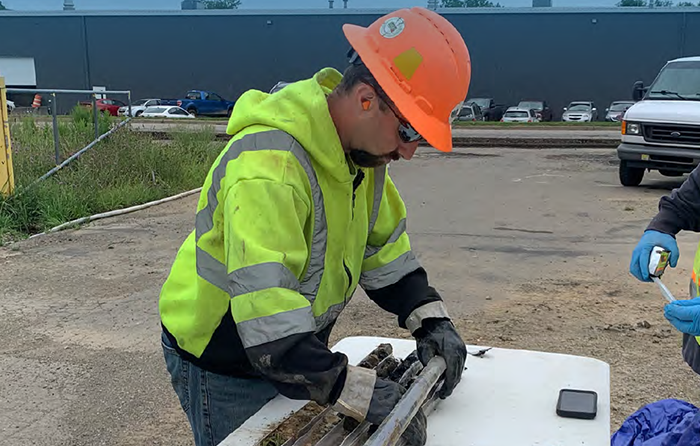Proven, Rapid, and Cost-Effective Petroleum Spill Treatment
Case study highlights:
- Nine sites IRSL treated with PetroFix have already achieved closure, most within one year after a single injection event
- PetroFix chosen at UNESCO World Heritage site due to sensitivity of a pristine water body at the site, offering a less disruptive approach to address PHCs
- IRSL proficiently uses the PetroFix Design Assistant to develop and store its own PetroFix remedial application designs
- Site remedies have led to significant cost savings for IRSL’s clients and demonstrated PetroFix as a viable means for treating PHC-contaminated sites in Canada
The case studies included in this multi-site review include sites where one of Canada’s largest and most experienced environmental remediation services companies InSitu Remediation Services Ltd. (IRSL) effectively used PetroFix in achieving site closures across Canada. InSitu Remediation Services Ltd. (IRSL), one of Canada’s largest and most experienced environmental remediation services companies, uses PetroFix to mitigate sites throughout Canada impacted by petroleum hydrocarbons (PHCs), relying on the technology as an effective, low-cost, and more sustainable remedial solution. As one of the first to apply PetroFix in the field, IRSL has deployed the PetroFix technology to remediate a large number of PHC-contaminated properties, with land use ranging from gasoline stations and commercial properties to residential homes and a national park lodge. PetroFix has quickly eliminated PHC impacts in groundwater at these sites and prevented contaminant movement away from impacted properties, thus eliminating potential human exposure to PHCs and protecting pristine, ecologically sensitive surface waters.
Cost-effective In Situ Remediation of Chlorinated Solvents in Svenljunga, Sweden
Case study highlights:
- In situ remediation of groundwater contaminated with Trichloroethylene (TCE) was chosen for a former fur factory in Svenljunga, Sweden, as excavation or thermal treatment was deemed too expensive.
- A targeted application of 3-D Microemulsion® using direct push technology (DPT) successfully reduced groundwater and soil concentrations of TCE, DCE, and VC by approximately 95%, well below remedial targets.
- The chosen remediation method, 3-D Microemulsion injection, was not only effective in achieving significant contaminant reduction but also cost-effective, with a cost of €21/tonne compared to the more expensive alternatives of excavation and thermal remediation.
In situ remediation of groundwater impacted with Trichloroethylene (TCE) was completed at a former fur factory in Svenljunga, Sweden, as it had been determined that excavation or thermal treatment would have been too expensive. A targeted application of 3-D Microemulsion® was performed using direct push technology (DPT) to complete the injections. Validation sampling showed that the concentrations in the groundwater and soils had been reduced by approx. 95%, to well below the remedial targets. 3-D Microemulsion (3DME) is an engineered electron-donor emulsion that offers a steady and long-term source of staged-release hydrogen (in the order of 4 to 5 years from a single application) to enhance the reductive dechlorination (ERD) of chlorinated compounds. It has been optimized to distribute widely upon injection, allowing for high volume applications, reducing the number of injection points and events required onsite. Click the logo to learn more about how 3DME works.
PFAS and CVOC Remediation Paves the Way for Mixed-Use Tower
Case study highlights:
- Certificate of Completion Awarded through New York State’s Brownfield Cleanup Program
- Combined remedy approach using ISCO and colloidal activated carbon to successfully treat CVOC and PFAS contaminants
- Greater than 90% reductions in mass flux achieved at property boundary
This case study reviews a site where a combined remedy was implemented using PersulfOx® to reduce contaminant mass at the source and a PlumeStop® barrier to prevent residual contaminant migration beyond the site boundary. The successful remedial effort earned the site a Certificate of Completion through New York State’s Brownfield Cleanup Program, facilitating the new development in this commercially valuable area. A brownfield site in New York is the first of two high-rise, mixed-use buildings offering residential, parking and retail space. The project, administered through the NY State Brownfield Cleanup Program, was a former electroplating facility with numerous open vats of chemical solvents and acids that gradually leaked and migrated into the fractured bedrock subsurface beneath the site. SESI Consulting Engineers (SESI), a leading environmental engineering services company based in New Jersey, completed several phases of Remedial Investigation, revealing site soil and groundwater impacted by CVOCs, PHCs, metals (chromium and nickel), PFAS, and 1,4-dioxane.
Reductive Dechlorination Approach Treats Large Chlorinated Solvent Plume
Case study highlights:
- Innovative combined remedy on active site effectively eliminates risk to adjacent property
- Remedy from REGENESIS chosen based on proven effectiveness in treating similar large CVOC plumes
- Design Verification Testing and placement validation guide a successful remedial application
This case study reviews the successful in-situ treatment of chlorinated solvents at a former food processing plant located in a suburb south of Indianapolis. PlumeStop, S-MicroZVI, 3DME and BDI Plus were used in combination to strongly inhibit CVOC plume migration near the site property boundary while enhancing abiotic and biotic degradation of CVOCs at this location and in the upgradient plume area. Patriot Engineering and Environmental, Inc. (Patriot), a leading consulting firm based in Indianapolis, investigated the site, discovering contaminants had migrated from an unidentified source and formed a large plume. In addition, it was found that the plume was being pulled toward a former (now inactive) public water supply well. The primary chlorinated volatile organic compounds (CVOCs) detected in the plume were tetrachloroethene (PCE), trichloroethene (TCE), and cis-1,2-dichloroethene (cis-DCE).
Injectable PRB Provides Rapid Remediation of Chlorinated Plume Allowing Redevelopment within Months
Case study highlights:
- An in situ permeable reactive barrier (iPRB) was installed combining PlumeStop, S-MicroZVI and BDI Plus reagents
- Additional Design Verification Testing (DVT) was completed by REGENESIS prior to full-scale works
- Remediation targets and the client’s economic requirements were achieved on time and within budget, under a guaranteed contract
Stringent regulatory targets achieved in short timescale, despite challenging site conditions. Historical industrial activities at a former silver frames manufacturing facility in Central Italy had caused chlorinated solvent contamination in the subsurface, which was extending beyond the site boundary. As the site was undergoing redevelopment into residential buildings, the construction company had a strict deadline for remediation to be completed and so a strategy was needed to avoid the long-term installation of active pumping equipment onsite.
Combined ISCR and ERD Remedial Approach Knocks Down PCE Concentrations in Poland
Case study highlights:
- Safe and easy co-injection of PlumeStop and S-MicroZVI
- A grid of 30 injection wells was used, with a 4m spacing between wells
- A rapid, significant drop in PCE concentrations was achieved in the entire treatment area, with no daughter products observed
- Monitoring is ongoing
Rapid groundwater treatment achieved at manufacturing plant, without daughter product build-up. At an active manufacturing plant in the region of Greater Poland, in the West of the country, historical perchloroethylene (PCE) contamination was found to be impacting both soil and groundwater. Environmental company PROTE determined that contamination originated from a number of spills and leakages that occurred over the >20 years of manufacturing on the site.The canal adjacent to the site was identified as a potential downgradient receptor vulnerable to impact from offsite advection of the contamination. Therefore, remediation was driven by a requirement to remove the site owner’s potential liability, whilst being completed within strict budgetary restrictions.
Cleanup Goals Met Post PetroFix Application
Case study highlights:
- Injecting PetroFix was the lowest cost option and fastest route to site closure
- An air sparge/multi-phase extraction (AS/MPE) system provided significant reductions to PHC concentrations, but was unable to meet required cleanup levels
- PetroFix application quickly achieves cleanup goals and sustains reductions for over two years
This case study reviews a former gasoline station located in the Florida Panhandle, where an underground storage tank (UST) release site is now poised for closure. After reviewing the available remedial options, Advanced Environmental Technologies, LLC (AET), a leading environmental consulting and engineering firm, determined PetroFix® Remediation Fluid would provide the most economical and efficient means to reduce concentrations below the groundwater cleanup target levels and achieve site closure. Injection of PetroFix, a field-proven, colloidal activated carbon technology developed for PHC treatment, is a highly targeted and minimally invasive in situ approach, requiring low pressure for injection delivery. Since this was an active business, these features were favored for the minimal impact on operations compared to other approaches.
PlumeStop Successfully Remediates PFAS at Alaska Airport
Case study highlights:
- Targeted PFAS contaminants remediated to below detection limits at airport site
- Challenging environmental conditions overcome for a successful PFAS source zone treatment
- PlumeStop application has completely remediated the five individual PFAS targeted, reducing concentrations from 1,200 ng/L to non-detect
This case study reviews a site where PlumeStop® Colloidal Activated Carbon was applied to treat PFAS resulting from aqueous film-forming foam (AFFF) usage at an airport facility in Alaska. The application has reduced the five targeted PFAS below detection limits and applicable cleanup levels in a challenging hydrogeologic environment over a sampling period now approaching two years. In 2017, Fairbanks International Airport began an investigation in collaboration with the Alaska Department of Environmental Conservation and the Fairbanks office of Shannon & Wilson, a leading Pacific Northwest-based environmental consulting firm, to investigate the extent of PFAS migration from the site. Shannon & Wilson engaged REGENESIS for a pilot test plan to remediate one of the identified AFFF release areas, following successful treatments demonstrated at other sites.
225m Permeable Reactive Barrier Treats TCE and Chromium (VI)
Case study highlights:
- A large-scale remediation project with challenging conditions: geology, underground services, ongoing site use and multiple stakeholders
- Treatment of a co-mingled chromium (VI) and TCE plume via enhanced biological dechlorination and chemical reduction, using: S-MicroZVI,
3-D Microemulsion and BDI Plus - Pilot study proves appropriateness of the proposed in situ remedial solution, allowing regulatory sign off for the full scale works.
- Post remediation monitoring results to date show significant chromium reduction and TCE below detection limits
Sustainable and cost-effective remediation of a co-mingled plume in a sensitive chalk aquifer. A 48 hectare site in the UK was to be redeveloped for mixed commercial and residential use. The existing site included a mix of historic and existing industrial land use, including a metal plating works, surrounded by agricultural land and residential housing. The Mott MacDonald engaged early with REGENESIS regarding potential options for remediation.
New York Brownfield Site Treated for PFAS Achieves Closure
Case study highlights:
- NYSDEC certifies cleanup requirements achieved, making the site eligible for redevelopment
- Brownfield cleanup program’s green remediation policy leads to PlumeStop for PFAS treatment
- PlumeStop barrier for PFAS treatment is a key component in pursuit of site closure
- Skillfully managed PlumeStop application achieves GSR and cost reduction objectives
This case study reviews a 25-acre former refinery located in a mixed-use industrial/commercial area that was contaminated with PFAS. Benchmark Environmental Engineering & Science, PLLC & TurnKey Environmental Restoration, LLC (Benchmark & TurnKey), a leading engineering and redevelopment consulting company headquartered in Buffalo, New York, engaged REGENESIS for an in situ remedy that would effectively and economically cut off the plume and prevent migration of PFAS offsite. The site was entered into the New York State Department of Environmental Conservation’s (NYSDEC’s) Brownfield Cleanup Program (BCP) to facilitate its commercial redevelopment. Remedial alternatives were evaluated for a comprehensive site closure strategy, and approaches were scored based on NYSDEC’s Green Remediation Policy Document DER-31, which considers the “environmental impacts of treatment technologies and remedy stewardship over the long term.”

 Americas
Americas Europe
Europe Français
Français Deutsch
Deutsch Italiano
Italiano Español
Español